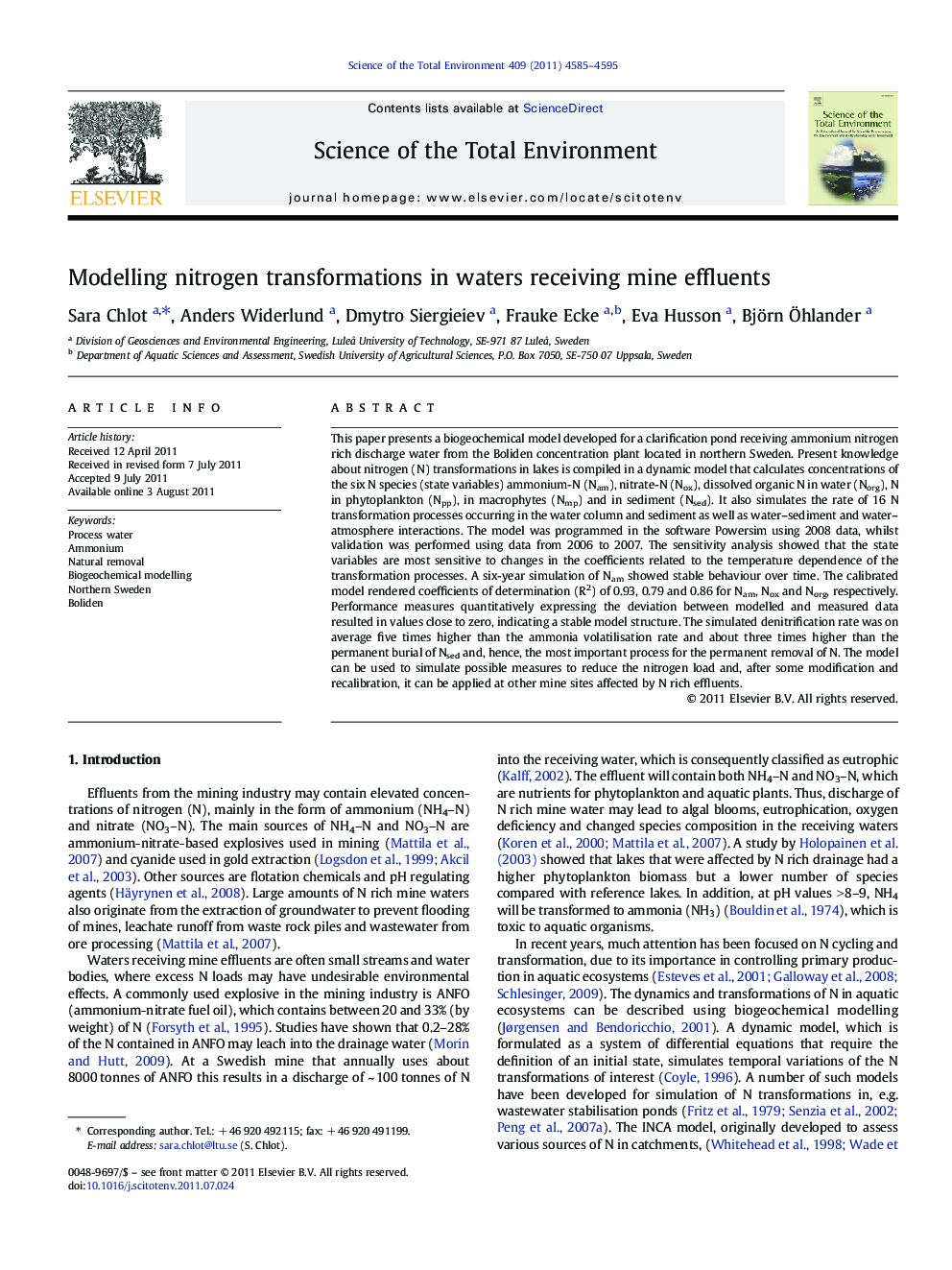| کد مقاله | کد نشریه | سال انتشار | مقاله انگلیسی | نسخه تمام متن |
|---|---|---|---|---|
| 4430256 | 1619841 | 2011 | 11 صفحه PDF | دانلود رایگان |

This paper presents a biogeochemical model developed for a clarification pond receiving ammonium nitrogen rich discharge water from the Boliden concentration plant located in northern Sweden. Present knowledge about nitrogen (N) transformations in lakes is compiled in a dynamic model that calculates concentrations of the six N species (state variables) ammonium-N (Nam), nitrate-N (Nox), dissolved organic N in water (Norg), N in phytoplankton (Npp), in macrophytes (Nmp) and in sediment (Nsed). It also simulates the rate of 16 N transformation processes occurring in the water column and sediment as well as water–sediment and water–atmosphere interactions. The model was programmed in the software Powersim using 2008 data, whilst validation was performed using data from 2006 to 2007. The sensitivity analysis showed that the state variables are most sensitive to changes in the coefficients related to the temperature dependence of the transformation processes. A six-year simulation of Nam showed stable behaviour over time. The calibrated model rendered coefficients of determination (R2) of 0.93, 0.79 and 0.86 for Nam, Nox and Norg, respectively. Performance measures quantitatively expressing the deviation between modelled and measured data resulted in values close to zero, indicating a stable model structure. The simulated denitrification rate was on average five times higher than the ammonia volatilisation rate and about three times higher than the permanent burial of Nsed and, hence, the most important process for the permanent removal of N. The model can be used to simulate possible measures to reduce the nitrogen load and, after some modification and recalibration, it can be applied at other mine sites affected by N rich effluents.
► We present a biogeochemical model for a lake receiving nitrogen-rich mine effluents.
► The model simulates nitrogen transformations in the sediment–water–air system.
► Magnitude and relative importance of various transformation processes are compared.
► After re-calibration the model can be used for other mine sites.
► Measures for reducing effects of effluent nitrogen concentrations can be simulated.
Journal: Science of The Total Environment - Volume 409, Issue 21, 1 October 2011, Pages 4585–4595